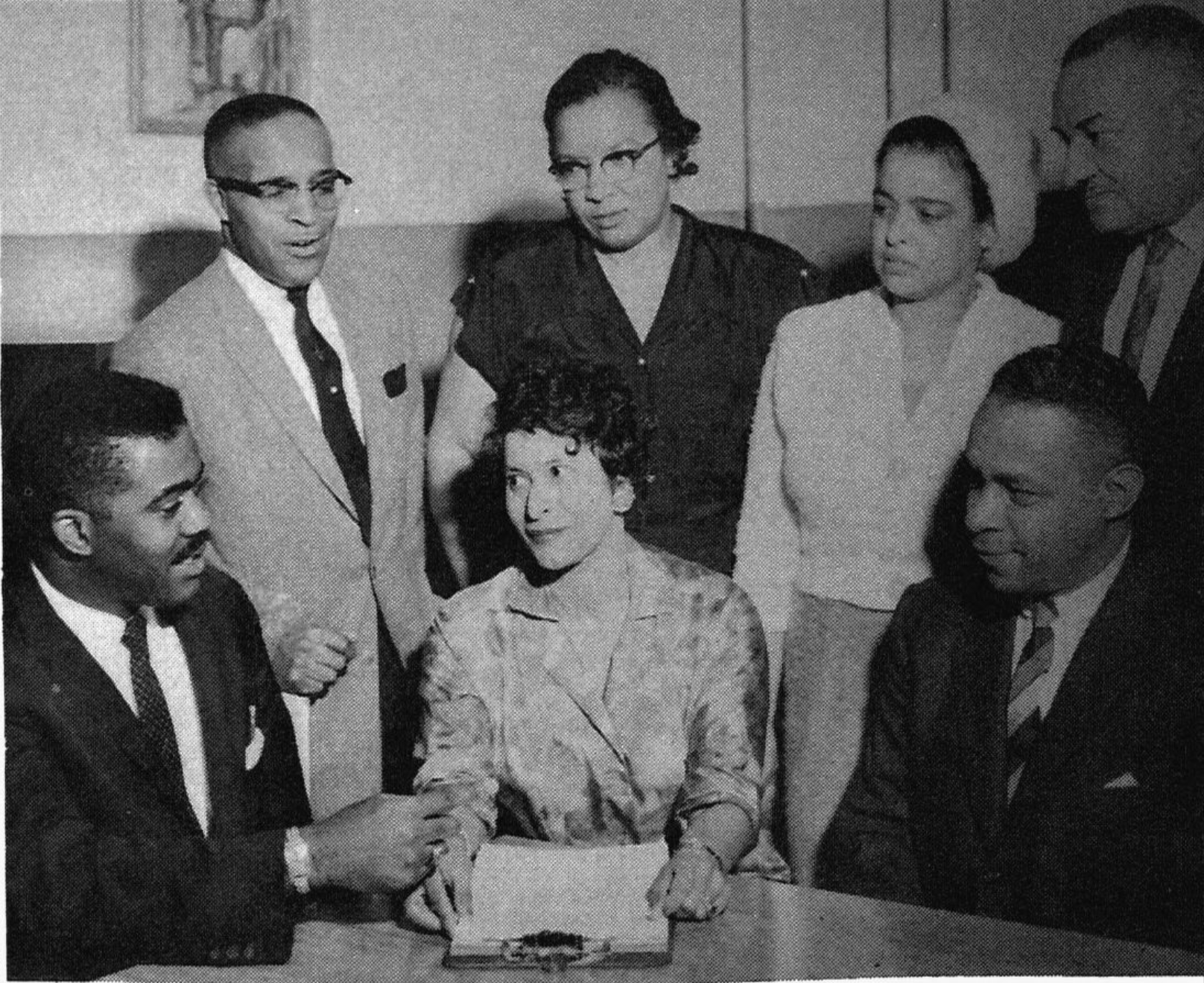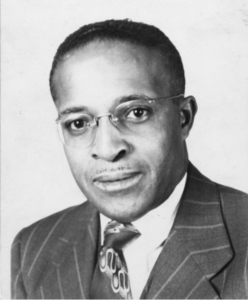(Nov. 23, 1907-May 11, 1973). Ramsey was born in McMinnville, Tennessee, the oldest of eight children. His mother brought the family to Indianapolis, where he attended segregated beginning in 1917. He graduated sixth in his class from the integrated in 1925. Without funds to attend college, the principal of Manual wrote a letter of recommendation to the , and its members awarded Ramsey its annual $50 college scholarship.
Ramsey earned a B.A. from and an M.A. from Indiana University. He started teaching foreign languages at in 1935 and married Sophia Maria Tate of Louisville, Kentucky, on June 24, 1937.
In 1947, while teaching, Ramsey began writing a column for . His “Voice from the Gallery” column covered local and national topics, as well as commentary on civil rights issues. He used this platform to initiate a grassroots effort to frame school segregation in terms of injustice, identity, and agency. The column ran in the newspaper for more than a quarter century.

Ramsey became the president of the Indiana (NAACP) in 1963. The Butler chapter of the Omega Psi Phi fraternity, of which Ramsey was a member, awarded him its “Citizen of the Year” Award for his civil rights work in 1964.
Ramsey was instrumental in uncovering continued racial bias within IPS. In 1966, he requested the federal government charge the city of Indianapolis with failing to assign Black teachers to schools in white neighborhoods. Two years later, after a parent complained about continued segregation in IPS, Ramsey and other NAACP leaders compelled the U.S. Justice Department to act against the IPS School Board for violation of Brown v. Board of Education (1954), which mandated the desegregation of schools. The U.S. Justice Department filed the case of the city of Indianapolis, Indiana on May 31, 1968, citing a violation of Brown as well as the 1964 Civil Rights Act.

As a linguist, Ramsey used his skills to help minority communities. In 1972, he was appointed to the Governor’s Migrant Labor Commission. In this role, Ramsey advocated for the rights of Indiana’s migrant workers, the majority of whom were immigrants. By year’s end, , president of Northside Realty, appointed him as the firm’s multi-lingual consultant. Here, he broke down obstacles to home ownership by serving as a liaison between banks, mortgage firms, and real estate customers who spoke French, Italian, or Spanish.
Before his retirement in 1972, Ramsey also taught foreign languages at Howe High School and . He and completed their work on a 4th-grade history supplement titled “Freedom’s Road, A History of the Black People in Indiana” in February 1973.
On May 18, 1974, the city named a park near his longtime home in the neighborhood in his honor. However, in 2022, there is no reference to Ramsey at the entrance to the park, only an Indy Parks sign greets visitors.

Help improve this entry
Contribute information, offer corrections, suggest images.
You can also recommend new entries related to this topic.





